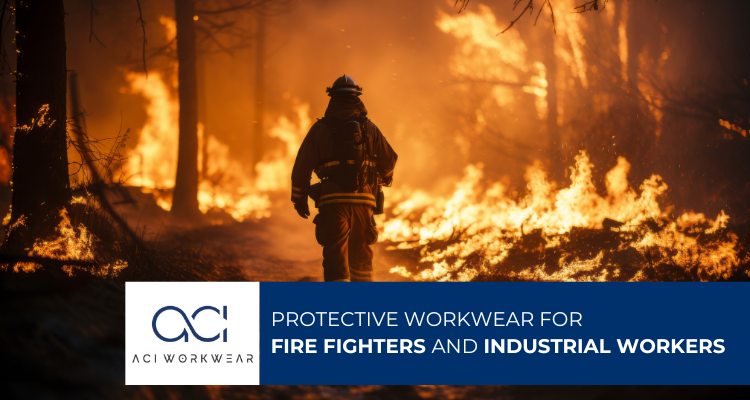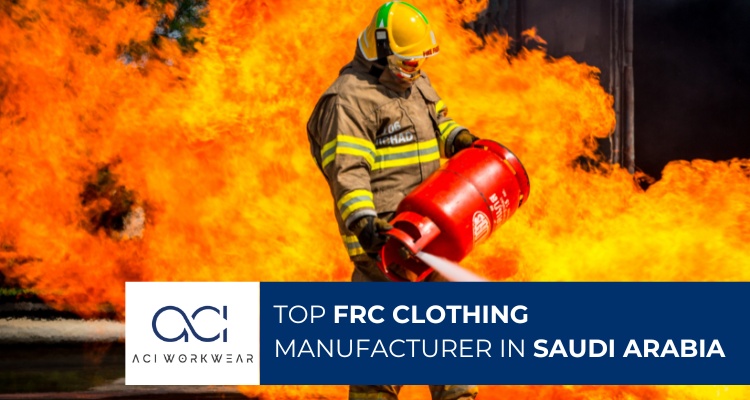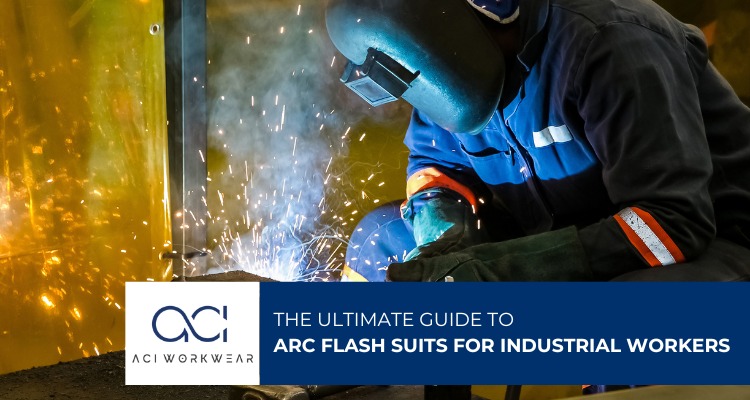
The Ultimate Guide to Arc Flash Suits for Industrial Workers
20/12/2024
Top FRC Clothing Manufacturer in Saudi Arabia
13/01/2025Introduction
Have you ever noticed a logo on a product that makes you feel more secure?
Not every product requires certification, but there are significant benefits to having the UL certificate. You usually find UL certificates on industrial wear that are used in smoke alarms, fire extinguishers, and circuit breakers.
However, when you know the importance of UL certification and the differences between UL-listed and UL-recognized, it helps you as manufacturers make informed decisions about product safety and compliance and ensure trust and worker safety.
What is UL Certification?
UL, or Underwriter Laboratories, is a third-party certification organization founded in 1894 in Chicago, a safety organization that certifies products to enhance safety for workers and consumers.
UL establishes universal standards for new workwear in the industry and regularly checks them for compliance. Their evaluations look at aspects like wire sizes and current handling capabilities to ensure workwear is safe.
Many people mistakenly believe that UL conducts all tests while in reality, they permit manufacturers to test their workwear under UL's supervision and assure it meets the standards, making UL certification reliable across the industries.
The well-known UL certificate signifies more than just approval. It comes in three levels: UL-listed, UL-recognized, and UL-classified. These levels may seem similar but have different implications. It is important to understand the differences among these levels so that you can choose the right UL-certified workwear.
So, The UL certification guarantees that industrial workwear products meet high safety, compliance, and quality standards. Recognized globally, it minimizes risks, meets regulatory requirements, and enhances customer confidence, making it a key standard for manufacturers aiming for excellence and dependability in international markets.
Why is UL Certification Important?
UL Certification is important because it assures trust for workwear in the worker's safety and confirms adherence to safety standards, especially as technology evolves.
Manufacturers refer to the UL certification on workwear to get the competitive edge, and uniform safety standard maintenance in manufacturing that helps protect both workers and consumers during product development.
Here are the top reasons why UL certification is needed:
Top Reasons Why UL Certification is Important
1. High Standards
A UL Certificate is not just a logo. It shows that the workwear is carefully tested to ensure it meets the high standards set by UL and will work as expected.
2. Safety
The UL-certified workwear gives the worker a sense of security. Having UL certification also protects you in case of accidents or emergencies and proves your awareness about your workers' safety.
3. Value
Worker safety is very important, and many people are willing to pay more for workwear that meets quality and safety standards. UL Certification provides your industrial workwear with high-quality safety gear having value for money.
4. Reliability
UL Certification offers trust and reliability. Your workers feel secure and confident when using UL Recognized wear, knowing that the chances of failure are low, and it is unlikely for costly repairs due to low quality.
Features of UL certification
- Ensures that your team complies with industry standards.
- Confirms that your workwear meets all required regulations.
- Check that your facilities comply with safety and operational standards.
- Verifies that your processes work well and satisfy the required regulations.
- Assesses and certifies your management systems to enable optimal performance.
How Does UL Certification Work?
The path to UL Certification can differ based on your company or project, but there are common steps that you need to follow.
The process mainly includes three important parts: planning, testing, and getting results that enable the business to use the UL Certificate. Usually, a manufacturer tests their product according to UL standards, and then a follow-up is done to ensure the testing follows the required guidelines.
Workwear is regularly checked, tested, and reviewed to ensure it meets UL standards which are stricter than usual industry standards, which makes it hard for many manufacturers to conduct tests outside of the lab.
Certain product types are tough to assess outside of UL labs due to hazardous tests, specialized equipment, and smaller labs that may not have the right tools.
Benefits of UL Certification
1. Improved Credibility
Getting certified by respected organizations like UL ensures that your workwear meets high standards. This trustworthy confirmation reassures workers about the workwear's reliability, quality, and safety.
2. Regulatory Approval
Certified workwear is easier to introduce to the market because it meets regulatory requirements. Because of the UL certificate, the compliance process becomes smoother and saves time and resources for industries.
3. Worker Trust
When workers see a UL certification on their workwear, they know their wear has gone through thorough testing. This builds trust and makes them worry-free about hazardous situations.
Difference between UL-recognized and UL-listed
UL uses many terms to explain its role in various products. Phrases like UL Certified, UL Approved, UL Tested, and UL Rated generally mean that UL has examined the product in some way. Phrases, such as UL Recognized and UL Listed, refer to specific kinds of UL Certification that products can have.
These terms do not define how a product will work in different situations. There are also more categories and ratings in UL certification for different product classes to help you understand what to expect.
1. UL Listed
UL Listed certification is meant for fully independent products, which include various consumer goods. These products are tested to ensure they meet recognized safety, durability, and environmental standards, confirming that they do not pose significant risks, such as fire or electric shock.
2. UL Recognized
While UL Recognized certification is for parts used in larger systems or complex assemblies, like various industrial hardware products such as latches, hinges, and handles.
UL Recognized components set standards for their mechanical features, helping to ensure that the final product is safe, well-designed, efficient, and sustainable. Even if all parts of a system have UL Recognition, the complete product must still be evaluated separately to get a UL listing.
For example, if a UL Recognized latch is used in a box, that box must pass more tests before it can receive a UL Listing. If a manufacturer of a UL-listed box wants to swap one UL Recognized latch for another, the box must be retested to confirm it still performs well and keeps its UL-listed status.
3. UL-Recognized vs. UL-Listed
The term UL Listed is widely recognized and signifies products that have met strict safety and sustainability standards set by Underwriters Laboratories (UL). You will find UL-Listed seals commonly on consumer goods proving that these products have undergone strict testing to ensure they are safe for everyday use.
The primary distinction between UL Listed and UL Recognized lies in their application: UL Listed is for stand-alone finished products, while UL Recognized is aimed at components.
The UL Listed seal assures workers of workwear's safety, particularly in environments where there is a potential risk of fire or electric shock. UL-Listed certification provides brand credibility and accountability, benefiting you by winning the trust of your workers with UL's respected safety reputation.
Ultimately, getting UL Listed certification not only assures workers safety but also supports workwear longevity, making it advantageous for both workers and employers alike.
Commonly found in factories, UL Recognized components like power supplies and circuit boards support machinery and promote sustainable practices. UL recognition on workwear ensures proper housing of wear and safeguards against chemicals or liquids.
Getting UL Recognized certification is generally easier than getting UL Listed status because you can selectively certify components within larger systems and benefit from less rigid industry standards.
Difference between UL and CE
You might not know about UL, but you may have seen similar logo seals in other countries. For example, CE is a similar organization in the EU that sets standards for electronics. CE stands for Conformité Européenne, which means "European Conformity" in French. CE is like UL, with the main difference being the country where it is used.
Like UL, CE helps companies by allowing them to sell their products throughout the EU and use the CE logo for marketing. Because of this, many businesses seek CE certification to improve their marketing opportunities.
Difference between UL and CSA
CSA standards, established by the Canadian Standards Association, are primarily used in Canada and apply to a wide range of products, including electrical items and building materials, to meet Canadian safety and regulatory requirements.
On the other hand, UL standards, created by Underwriters Laboratories, originate from the U.S. and are recognized globally, focusing on U.S. safety and performance standards. CSA certification is shown by the CSA label, while UL certification is marked by the UL symbol. Both organizations perform thorough testing to ensure compliance with their standards.
Thus, CSA standards are important for Canadian markets, while UL standards are significant for U.S. and international markets.
How to Figure Out UL Categories and Type Ratings?
When seeking UL certification, you will encounter many codes and numbers, which can be hard to fully grasp. Two important terms to know are Category Control Numbers (CCN) and UL Type Ratings in UL certification.
1. CCN
CCN is a number assigned by UL to products that have been tested and certified to meet safety standards for different uses. A CCN typically has four letters followed by a number, like FTTA2 or NITW8, which indicates the category of the product.
2. UL Type Ratings
UL Type Ratings are labels that show what a component can do based on its use. For example, the code 4X on a part indicates its expected performance. These ratings can also reflect other testing factors like material type, strength, resistance to corrosion, and protection against water and dust.
Why Choose UL-Certified Products?
What attracts companies to UL certification and recognition is the over a century’s strong reputation and trust of UL. Users see the UL certification on a product, feel more secure in their use.
Suppose you see two identical workwear side by side, and one has a UL certification while the other does not. In that case, you will choose the UL certification one because the UL logo gives you confidence and offers your business a positive reputation.
Final Thought
UL certification plays a significant role in workwear-requiring industries. The absence of UL recognition doesn’t mean a product is unsafe; it simply shows that its performance hasn’t been independently verified. Though it may take higher costs or longer testing, UL certification provides worker reassurance and improves your brand's value.
At ACI Workwear, we manufacture thoroughly tested and hazard-safe industrial workwear like General Workwear, High Visibility Clothing, FR & Arc Resistant Clothing, Cold Protective/Freezer Clothing, and Active Wear.
As a global industrial workwear manufacturer in India, we understand and ensure the highest quality and worker trust in our overall workwear.
Contact us for more.









